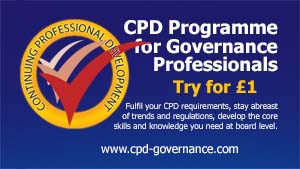Body Language
Body language
Understanding body language can help you correctly interpret other people's thoughts through their gestures, improve the effectiveness of your own communication with others and influence your own communication with yourself. It can improve your rapport building skills to create an environment of trust, confidence and participation to facilitate productive relationships.
Charlie Chaplin was superb at using body language. His silent films have delighted countless millions. He could show the full range of human emotions without saying a word. Rowan Atkinson, as Mr Bean, has created a more contemporary model from which we can learn.
Body language includes:
- choice of clothing
- distance from others
- posture
- stance
- sitting position
- movements
- gestures
- facial expression
- eye contact
- eye movements
Body language helps you read what people really mean.
It is the art of seeing what others are thinking. And if someone tries to mislead you their body language will usually give them away.
Focusing on other people's language gives you feedback on their true feeling towards you and what you are saying. It has clear value in social as well as work situations and is important in customer care.
Using body language successfully involves four stages:
1. Learn what to look for
2. Recognise it in other people so you can 'read' them better
3. Recognise it in yourself
4. Control it and use it to your advantage so you give the right messages to other people
With the first stage - learning what to look for - do be sensitive to people from different cultures. Many body language gestures are universal. But many others are not, and you could unwittingly give or take offence at these differences. In particular, note that people from low population density countries require much more personal space than those from crowded urban conurbations.
Look for clusters and look for changes
One gesture doesn't prove how the other is thinking - especially if he has been on a body language course! Having their arms folded may mean they are being defensive, or closed to your message - or it might mean they are cold! Or it could simply mean that that is how they happen to be comfortable.
Look instead for clusters - several individual bits of body language that fit together to tell the same story.
And look for changes in body language as you speak. It can give you an accurate picture of what they think about what you are saying. Or a changed response to your message. Reaching a decision is often followed by a sudden change in body language, even getting up and walking around the room.
Observe people during a negotiation. What can you detect in their behaviour that gives signs of their thinking?
Open or closed
Some body gestures are open, expansive and positive. For example, leaning forward with open palms facing upwards. These show interest, acceptance and a welcoming attitude.
Some others are closed, defensive and negative. For example, leaning backwards, arms folded, head down. These may signal disinterest or rejection.
Observe people in a conversation. Are they open or closed?
What signs do you detect?
Cold or warm
If you use plenty of gestures, other people interpret you as being warm, enthusiastic and emotional. This would be appropriate if you want to generate enthusiasm for a new idea.
Using gestures sparsely would make you seem cold, reserved and logical. This could be suitable if you wish to convey cold facts or bad news.
Take the opportunity of observing people at different times. Do they appear warm or cold?
What gestures make you think that?
Mirroring
When two people use similar gestures they tend to believe that they think alike. This helps create a bond. You can use this to your advantage when dealing with a manager or subordinate by unobtrusively mirroring their gestures. If you are dealing with a group of people you concentrate on their leader.
Observe how mirroring happens automatically in a good relationship.
How did they establish the mirroring?
Was there a moment when they gave signs they were in rapport?
What did you see?
Mirroring is a means of gaining rapport so that you can then lead. Mirroring closed gestures or anger can be a first step to leading the person into a more open, calm behaviour.
A definite ending of mirroring is a means of breaking rapport.
When might it be useful to break rapport? Observe the effect in others or try it for yourself.
What was the effect?
Distance from others
Each person has around them an area they regard as their personal space. In the UK it has a radius of roughly a yard/metre. Beware of intruding into a person's personal space. Although some may regard it as friendliness, you will make most people feel uncomfortable.
Do you know anyone who breaks this rule. What is the effect of intruding?
You may be able to use distance to your advantage. One example is seating at a table:
- To achieve a friendly relationship use a corner situation so that the two people are sitting at an angle, only part separated by the table.
- To stress teamwork sit side by side.
- To maintain formality sit opposite each other.
Observe the way people select sitting positions at different types of meeting.
How did it influence the progress of the meeting. Would different positions have been more effective?
Would it have been appropriate to have moved position at a particular stage?
You could dispense with the table altogether. This might increase the distance but would remove the barrier of the table and expose a greater body area for sending and receiving body language signals?
Observe non-verbal communication between people sitting without a table. Was it more effective?
Why?



